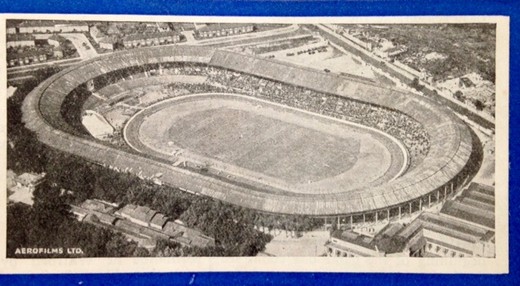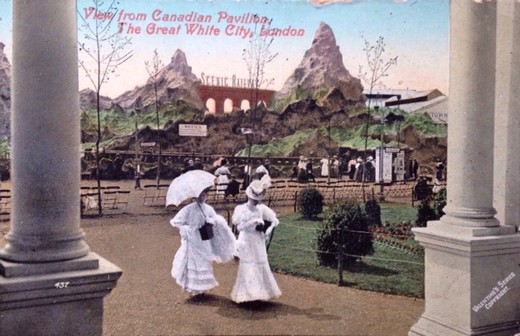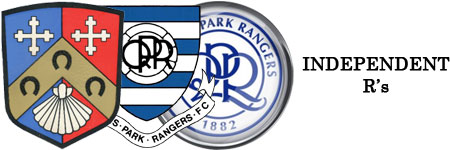The following article was written by ‘The Ranger’ and comes from the Portsmouth Evening News, dated the 10th December 1937:
‘Irrespective of whether it will be used for staging the Cup Final or the Olympic Games, one of the greatest sports stadiums in the world is to be constructed in London.
Pictures have already been published of the model of the White City Stadium as it will look when the proposed alterations have been carried out at an estimated cost of more than £250,000.
The plans have been prepared by a well-known architect who has been associated with most of the big football stands in the country, but an interesting point is that Brigadier General A. C. Critchley, the White City chief, declares that the work of reconstruction will be carried out solely for the requirements of his company.
There can be but one interpretation of such a statement, which means that whether the Cup Final or the Olympic Games are staged in this gigantic arena, the White City authorities are going ahead with the scheme.
It is designed to hold 163,000 people, 119,000 under cover in a double-decked stand circling the arena, on which provision will be made for greyhound and athletics tracks and for a full-size football pitch.

Bearing in mind the laying out of a football pitch and Brigadier General Critchley’s statement that they were not relying upon the Cup Final, one is apt to picture one of the big London clubs transferring its headquarters to the White City. Who could it be?
In any event, big crowds are expected because it is stated that the London Passenger Transport Board have agreed to move the existing Wood Lane tube station to a site immediately opposite the present main entrance to the White City.
From the new station, which will have three platforms and facilities for dealing with 800 passengers a minute, bridges will convey the crowds direct to either the first or second tier of the stadium.
New roads will be constructed and it is intended to provide parking accommodation for 10,000 motor-cars.
Major General Critchley’s view of the Olympic Games is that the Olympics have grown far too big for any private concern to undertake as regards staging, and he thought it would have to be a matter for a Government department.
In that event he would gladly hand over the New White City Stadium free to the departments concerned.’

The Stadium was built for the 1908 Summer Olympics on the site of the magnificent Franco-British Exhibition.
The Olympic events included; archery, gymnastics, swimming, the Rugby Union final and the marathon finishing-line was actually in front of the Royal Box.
In 1926, the Greyhound Racing Association took over the Stadium and towards the end of the decade the White City Rebels speedway team operated there.
Greyhound racing was hugely popular and an attendance of 92,000 was recorded for the 1939 Derby final.
QPR moved to the White City in 1931 but unfortunately it proved to be a financial disaster and the club was forced to return to Loftus Road two years later.
Major boxing events began to be staged there from 1932 and Len Harvey was one of the famous boxers to fight there.
The following year a Rugby League side, Wigan Highfield moved to the Stadium and changed their name to London Highfield, despite this, the venture didn’t prove to be popular and the owners ended up losing money.
In 1934 the second British Empire Games were staged there.
The White City continued to host major events post-war, but I think its fair to say that by the 70’s it was in decline and the Stadium was eventually demolished in 1985.
Steve Russell
(My thanks to Colin Woodley for his assistance. The bottom pic is of a postcard from my collection and the top image is of a programme cover of the period I have)

One to be added to the National Athletics Stadium and two at Park Royal ‘what might have been’ list.
It would have been some stadium if plans had gone ahead.